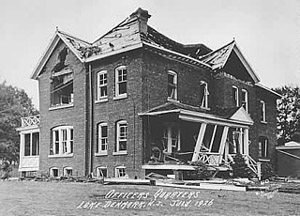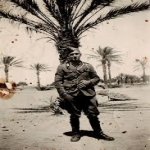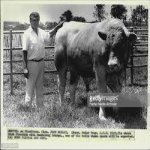Dark Alley Dan
CGN Ultra frequent flyer
- Location
- Darkest Edmonton
On July 10, 1926, lightning struck a tree at the Lake Denmark Naval Munitions Depot at Pickatinny Arsenal in New Jersey. The burning tree overhung a building full of artillery shells, and over the next few days, much of Pickatinny Arsenal blew up.
Before:


After:







$487,000,000 in damage, 187 of 200 buildings destroyed, and 21 people killed. A bad day for all involved.
Before:


After:







$487,000,000 in damage, 187 of 200 buildings destroyed, and 21 people killed. A bad day for all involved.
Last edited:




















































































